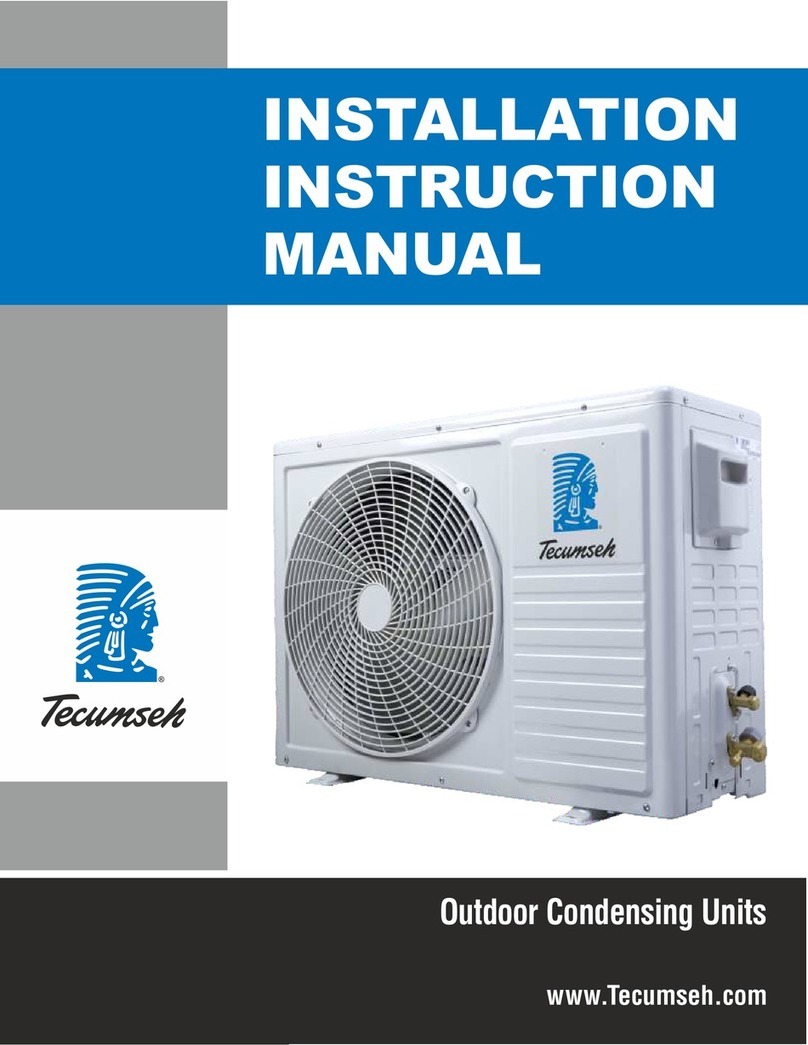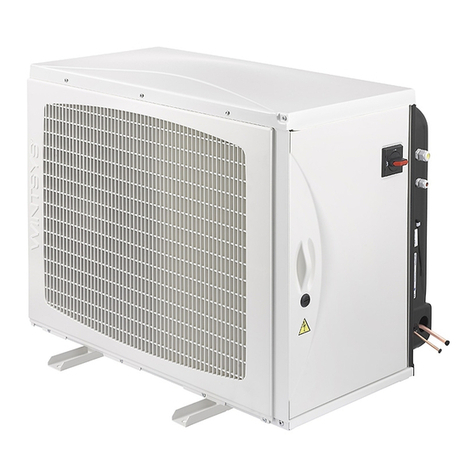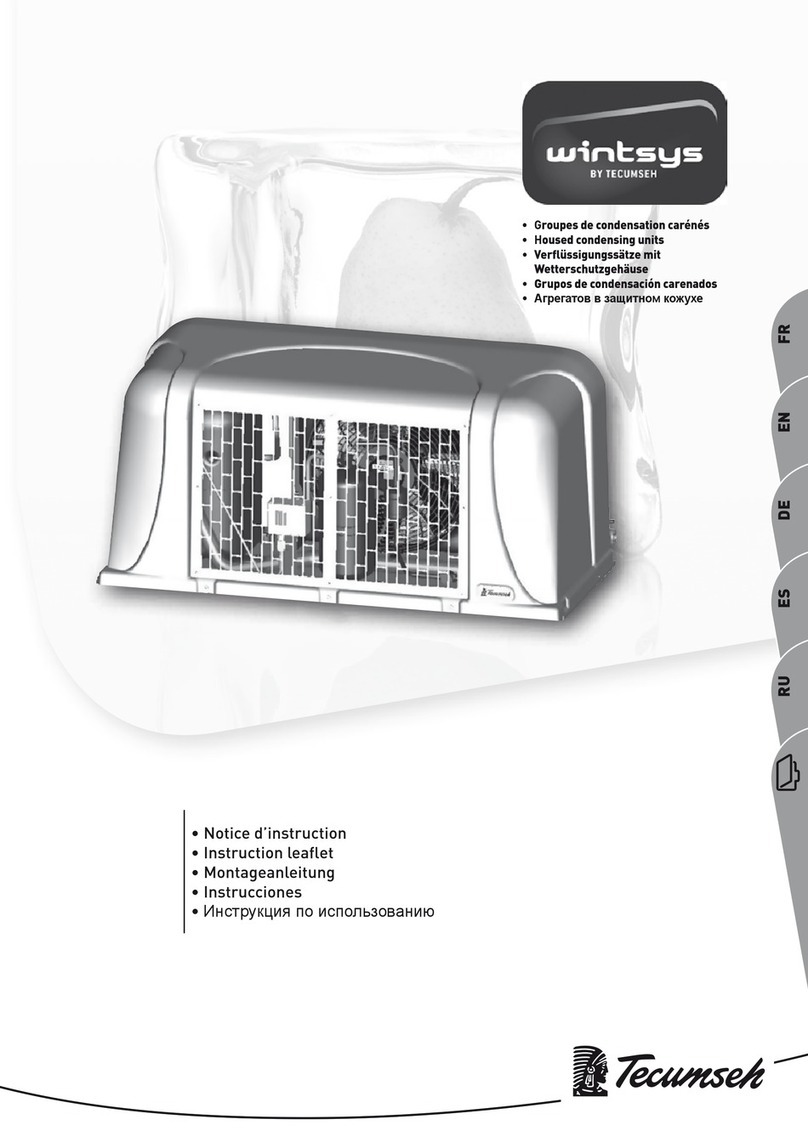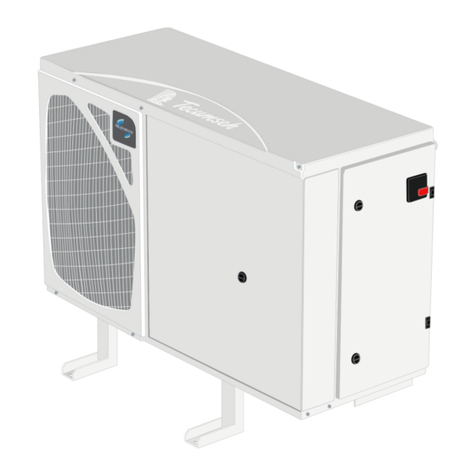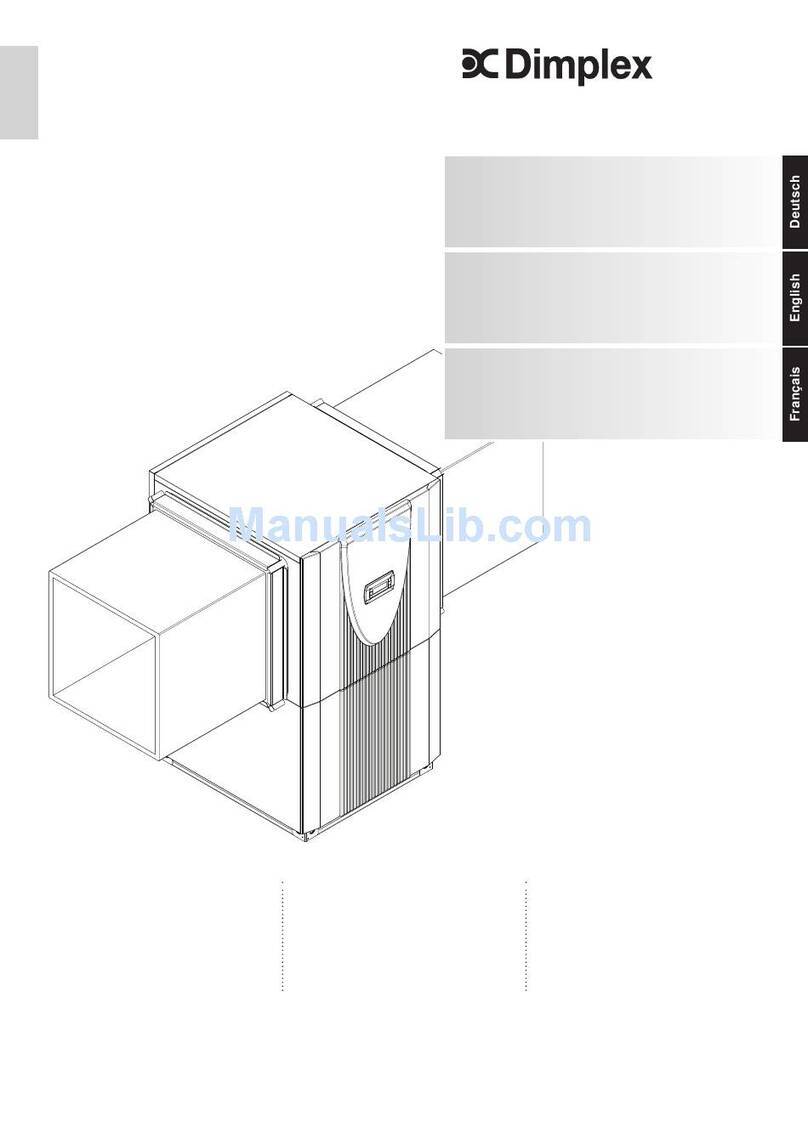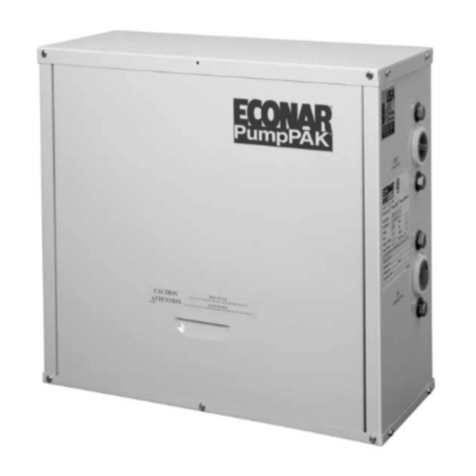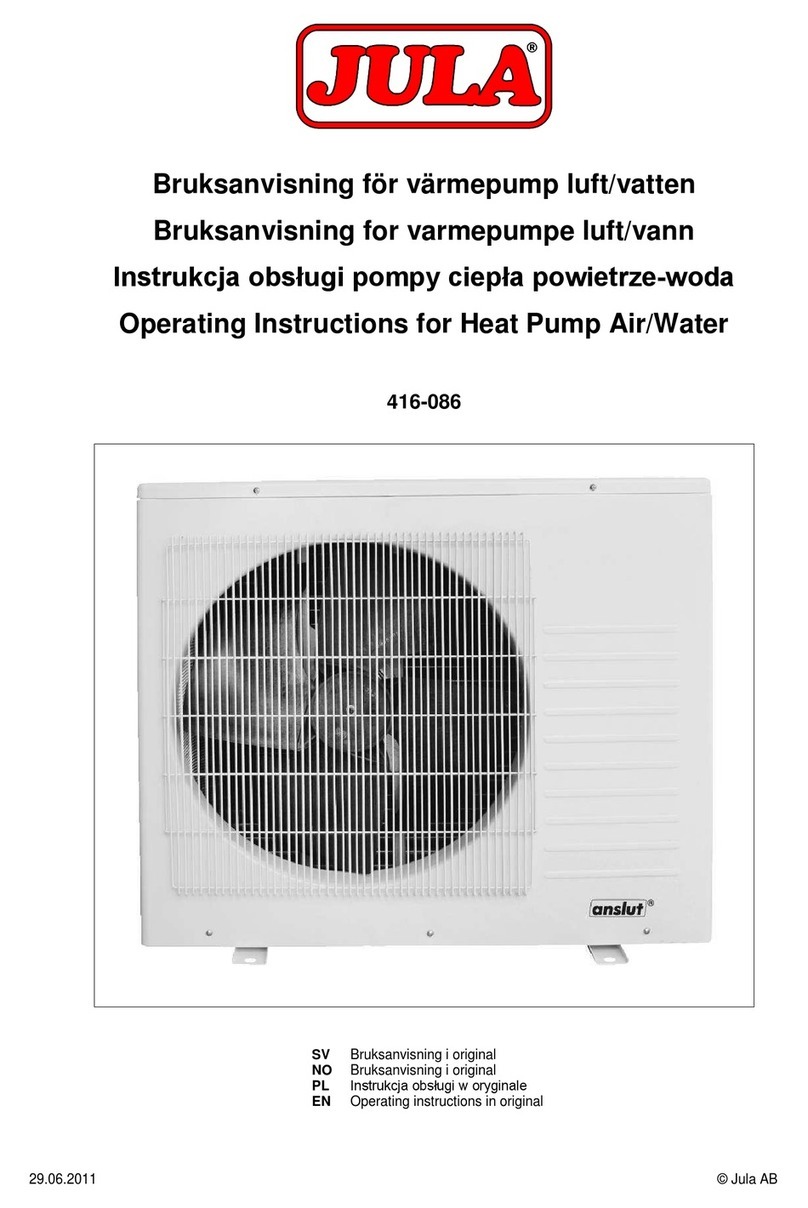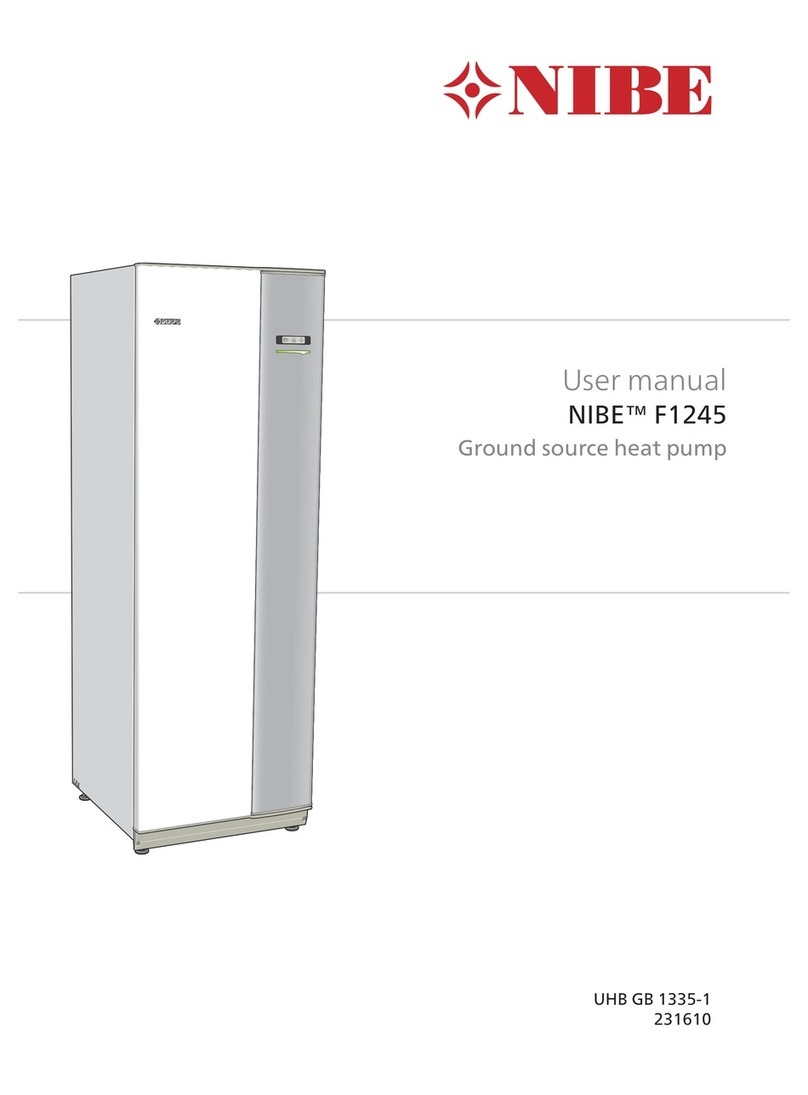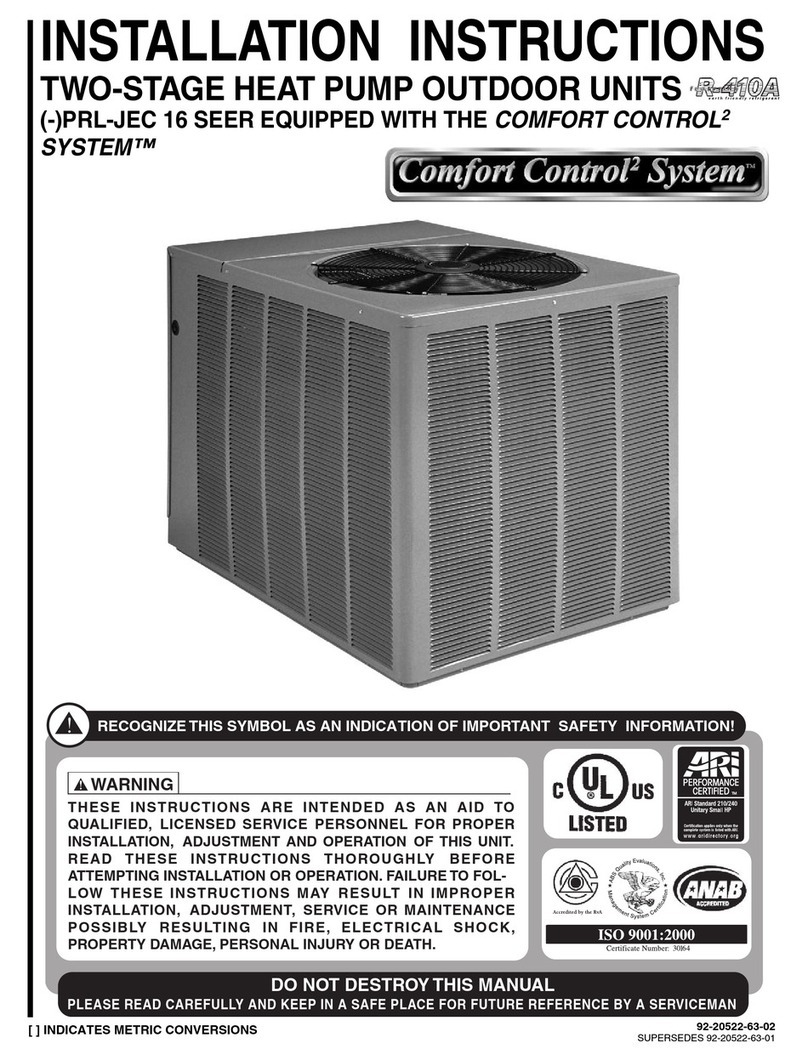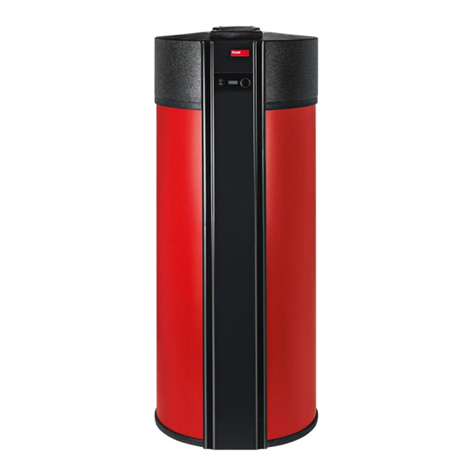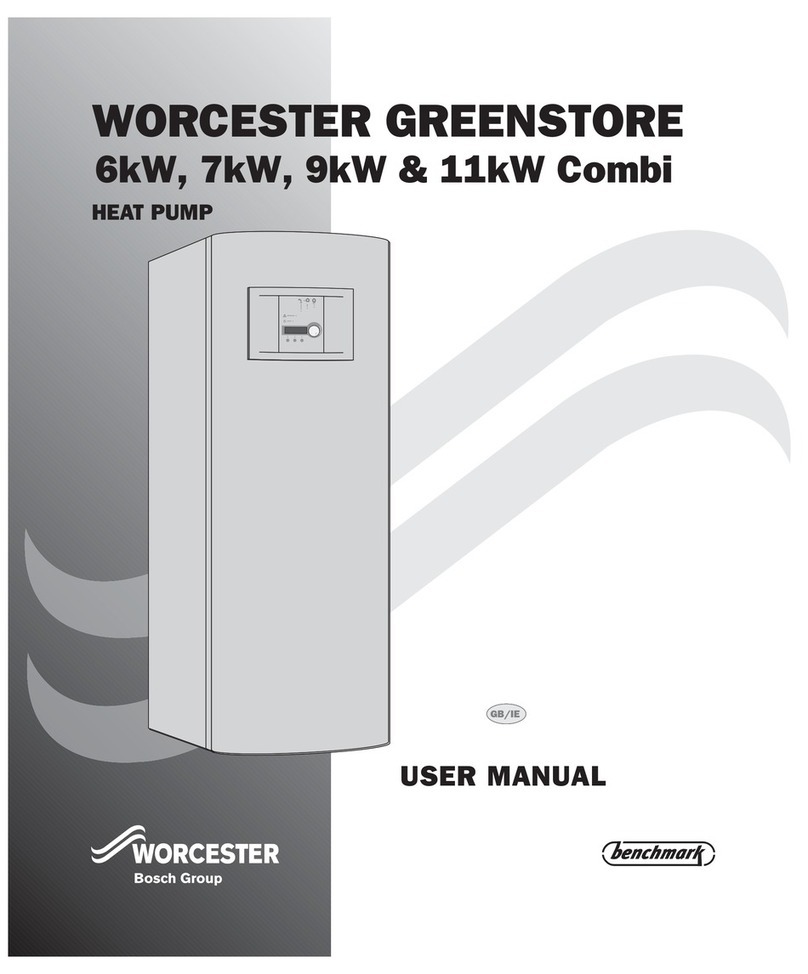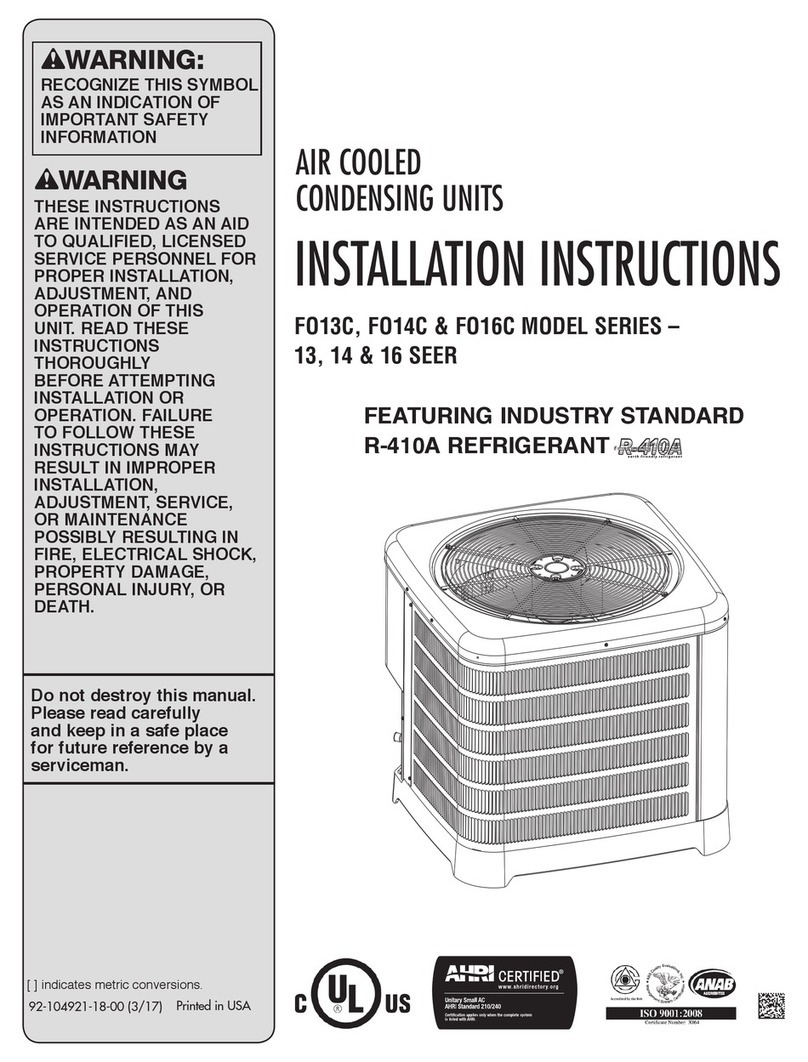4.2 Pulling a vacuum
Pull a deep vacuum on the installation to about 200
microns mercury with a suitable vacuum pump.
We recommend that a vacuum is pulled simultaneously
from both high and low pressure sides of the system to
ensure a uniform vacuum throughout the system including
the compressor, and to reduce the amount of time required
to obtain the vacuum.
4.3 Refrigerant charge
Charge the installation using only the refrigerant for which
the unit has been designed (see identification plate).
Charging with refrigerant should always take place in the
liquid phase in order to maintain the correct blend of
zeotropic refrigerants. Only liquid charge into the liquid line.
NEVER START THE COMPRESSOR UNDER VACUUM,
WHETHER HBP OR LBP and ensure before starting that
the compressor casing is under positive pressure. We
therefore recommend slowly charging the system to 4 or
5 bar when using R-404A, and approximately 2 bar when
using R-134a.
The remaining refrigerant can then be slowly charged into
the suction line when the compressor is running, until the
nominal operating conditions of the installation are
reached. Complete the "Pre-start check list" below before
switching on the installation.
4.4 Pre-start check list
Make sure that:
1. The power supply voltage is compatible with that of the
condensing unit.
2. Electrical safety devices are set correctly for the
condensing unit.
3. Service valves are fully open.
4. The crankcase heater is working.
5. Condensing unit fan blades rotate freely.
6. The installation is given a final check for any possible
faults.
7. Check the electrical power supply phase order for the
three phase compressors in order for the motor to run in
the right direction, enabling the refrigerant to be
compressed.
Reverse 2 phases if necessary.
4.5 Check list after start up
After the installation has been running for several hours,
carry out the following checks. Make sure that:
1. The voltage and current drawn by the condensing unit
is correct.
2. The high and low operating pressures of the installation
are correct.
3. Fan blades are rotating freely.
4. Superheat and sub cooling
5. The system is checked again for leaks.
Make sure that the installation is running smoothly.
Carry out a general inspection of the installation (e.g.
cleanliness, vibration and/or unusual noises). Ensure the
settings and the functions of the electrical circuits are
correct.
The lack of refrigerant may be characterised by:
High and low pressure values that are too low
An evaporator that is partially frozen
The presence of bubbles on the sight glass if the
installation has one.
The excess of refrigerant may be characterised by:
A high pressure value that is too high
Overconsuming compressor
Important subcooling
A liquid return
5 SERVICING AND MAINTENANCE
No unauthorized modifications to the condensing unit are
allowed. Authorization from TECUMSEH EUROPE SA
must be obtained prior to any modification whatsoever.
Any faulty part must be replaced with an original spare
part.
5.1 Fan, condenser and leak search
Do not intervene on the condenser unit without protection
or prevention:
During operation, the compressor may reach
temperatures over 120°C
Protect yourself against heat
Compressor electricity supply
Isolate the compressor from its electricity supply
Fan electricity supply
Isolate the fan from its electricity supply
Pressure switch electricity supply
Isolate the pressure switches from their electricity supply
Check that the cooling circuit pressure does not create
a hazard for your intervention (projection of parts,
refrigerant, etc.)
Remove the protective grid from the fan only when the
blade is no longer rotating and the fan is no longer
powered up
You must look for leaks once a year or according to local
regulations.
Use the appropriate equipment to empty or refill the cooling
installation (recovery machine, goggles, gloves, etc.)
Regularly check:
The safety and regulation devices,
The electrical and cooling connection conditions
(tightening, oxidation, etc.),
The operating conditions
The attachments for the condensing unit to its support,
The operation of the crankcase heater or the heating belt
The cleanliness of the heat exchangers
5.2 Safety
Our compressors are designed to operate at a maximum
ambient temperature of 46 °C. Do not exceed this
temperature.
To optimise the quantity of refrigerant in the installation,
respect the cooling rules of the art.
For the different conditions of use of the compressor, do
not exceed its maximum service pressure (see
identification label).
If there is a single-walled tube between the water and the
refrigerant (e.g.: water evaporator) and if a leak occurs
through this wall, the refrigerant leaks outside and water
enters the system, creating a vapour effect. Without a
safety device, the compressor will behave like a vapour
generator and the motorʼs heating will generate a high
increase in pressure.
The disintegration of the insulator (glass bead) on one of
the compressorʼs electricity supply terminals following a
physical impact may create a hole through which the
refrigerant and some oil may escape. If it comes into
contact with a spark, this mix may catch fire. Regardless
of the work being carried out on the cooling system, simply
positioning the electrical unit cover correctly will protect
against this type of risk.
Avoid very corrosive or dusty environments. If the
installation is shut down for a lengthy period, you are
strongly advised to bring the cooling fluid into the tank
when the condenser unit has one. The aim of this
operation is to avoid the refrigerant migrating to the
compressor and any concentration of fluid within the
lubricant that may cause liquid slugs during
recommissioning.
6 WARRANTY
For information concerning the condensing unit warranty,
please refer to our general sales terms and conditions.
7 DECLARATION OF CONFORMITY
We hereby declare that condensing units comply with the
Low Voltage Directive 2006/95/CE.
• The applicable standards are:
- CEI 335-I [ EN 60 335-I ]: Safety of electrical domestic
equipment and similar – General description.
- CEI 335-2-34 [ EN 60 335-2-34 ]: Safety of electrical
domestic equipment and similar – Specific regulations
for motor compressors.
• To incorporate our products into a machine, the
Declaration of Incorporation of the manufacturer must be
observed. Our condensing units are not required to comply
with Pressure Equipment Directive 97/23/CE as they are
classified as a compatible sub-assembly.
• Certificates of conformity are available on request.
8 DECLARATION D'INCORPORATION
Only qualified staff are authorized to work on the
condensing unit. This product is defined as for installation
in machines according to European Directive 2006/42/EC
It is not permitted to run the condensing unit before the
machine into which it is incorporated has been declared in
conformance with the pertaining legislation.
In its constant endeavour to improve its products,
TECUMSEH EUROPE S.A. reserves the right to change
any information in this instruction manual without prior
notification.
FRANÇAIS
NOTICE DʼINSTALLATION
Groupes de condensation
Lire attentivement la notice avant de
commencer le montage
SOMMAIRE
1 MISE EN GARDE
1.1 Transport
1.2 Installation
2 CARACTÉRISTIQUES TECHNIQUES
2.1 Etiquette signalétique
3 INSTALLATION
3.1 Déballage
3.2 Manutention
3.3 Choix de lʼemplacement
3.4 Raccordements frigorifiques
3.5 Raccordements électriques
3.6 Couples de serrage des vannes sur les
compresseurs et bouteilles
3.7 Codes tensions
4 MISE EN SERVICE
4.1 Etanchéité du circuit
4.2 Tirage au vide
4.3 Charge en fluide frigorigène
4.4 Vérification avant le démarrage
4.5 Vérification après démarrage
5 ENTRETIEN - MAINTENANCE
5.1 Ventilateur, condenseur et recherche
de fuites
5.2 Sécurité
6 GARANTIE
7 DECLARATION DE CONFORMITE
8 DECLARATION D'INCORPORATION :
9. ANNEXES
Page 2 04/2011 Réf: 366324e
















